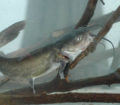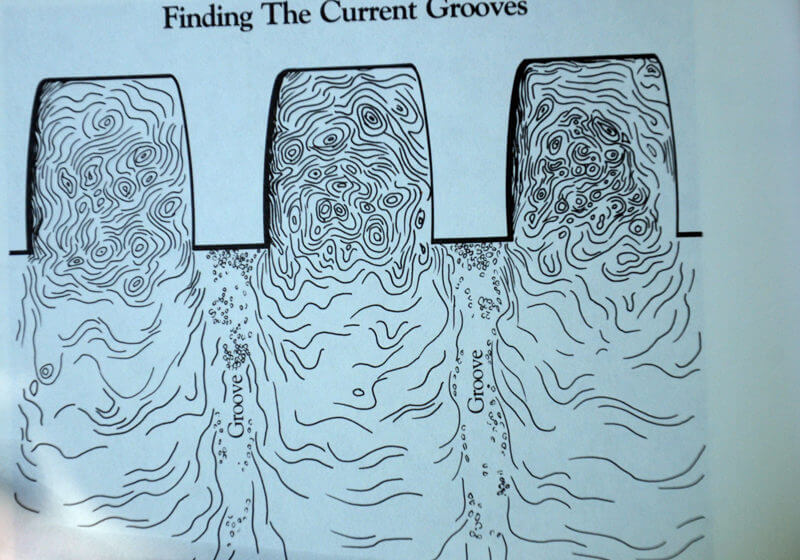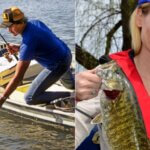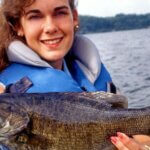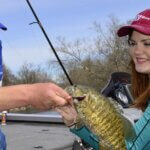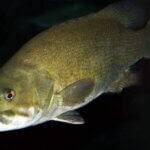 Editor’s Note: Bubbling and swirling, the swift waters of tailraces make anglers think of catfish, feeding in the current’s boils and foam in the highly-oxygenated water. But sometimes those catfish are hard to catch. Several friends of mine have solved the riddle of taking tailrace cats, after perfecting their catfish strategies on the Tennessee River that runs through Tennessee and Alabama. For more than 20 years, they have spent several days a week in the tailrace area watching anglers catch catfish as well as taking catfish themselves. Their tactics will work in tailraces throughout the nation. The key to catching catfish in tailraces is being able to read the water and knowing just where the catfish are.
Editor’s Note: Bubbling and swirling, the swift waters of tailraces make anglers think of catfish, feeding in the current’s boils and foam in the highly-oxygenated water. But sometimes those catfish are hard to catch. Several friends of mine have solved the riddle of taking tailrace cats, after perfecting their catfish strategies on the Tennessee River that runs through Tennessee and Alabama. For more than 20 years, they have spent several days a week in the tailrace area watching anglers catch catfish as well as taking catfish themselves. Their tactics will work in tailraces throughout the nation. The key to catching catfish in tailraces is being able to read the water and knowing just where the catfish are. 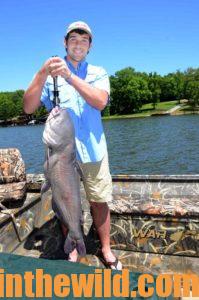 Although catfish roam most tailraces areas below dams because of the abundant baitfish in the water and the highly-oxygenated flow coming through the turbines, some parts of a tailrace will produce more catfish than others. However, productive spots may switch abruptly.
Although catfish roam most tailraces areas below dams because of the abundant baitfish in the water and the highly-oxygenated flow coming through the turbines, some parts of a tailrace will produce more catfish than others. However, productive spots may switch abruptly.
You need to note the amount of water coming through the turbine’s discharge. As the flow of water diminishes, the slowest water is on the flow’s outer edge. When two turbines are running side by side or close to each other, the surface water all appears to be moving at the same speed. But, the two currents actually collide with each other, so the water is slower where the currents meet. This slow water, between two, 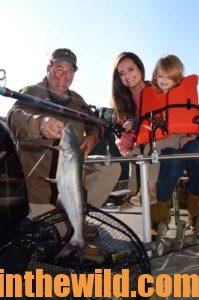 fast-moving currents, is called a groove. Remember catfish are not dumb. Although they will feed in the swift water, they are looking for the slowest part of the swift water in which to hold and feed. The grooves provide that slack-water area.
fast-moving currents, is called a groove. Remember catfish are not dumb. Although they will feed in the swift water, they are looking for the slowest part of the swift water in which to hold and feed. The grooves provide that slack-water area.
Out of a large number of anglers fishing in a tailrace area, anglers in certain boats regularly catch more catfish than those in boats fishing only a few yards away. The successful anglers have learned where the grooves are, how the currents collide, and where the fish are holding along the  bottom. Learning to read the grooves is like having an invisible road map that leads to the catfish no one else in the tailrace can find. By staying on the groove, you can catch catfish until the current changes, and they move.
bottom. Learning to read the grooves is like having an invisible road map that leads to the catfish no one else in the tailrace can find. By staying on the groove, you can catch catfish until the current changes, and they move.
Catfish move due to the turbine flow. Turbines at many dams are automatic and increase and decrease the water flow as the power requirements are met. Even though the turbines continue to run, the discharge flow may change two or three times during the day. When the flow varies, the cats often will move and search out more-slack water in which to feed. That’s why anglers who change locations several times  during the day usually catch more catfish in tailrace areas than those who sit in one spot.
during the day usually catch more catfish in tailrace areas than those who sit in one spot.
Once the cats stop biting in one groove, then you can assume the flow has changed. Move to find another groove full of cats. While converging currents create the grooves, the flow of water determines which groove is the most productive.
To learn more about catching catfish, check out John E. Phillips’ book, “Catfish Like a Pro,” available in Kindle and paperback, at http://amzn.to/W900eu. You can also get a free eBook copy of “The Catfish Catcher’s Cookbook” at https://johninthewild.com/free-books.
Tomorrow: Search For Rock Grooves and How to Catch Catfish There


